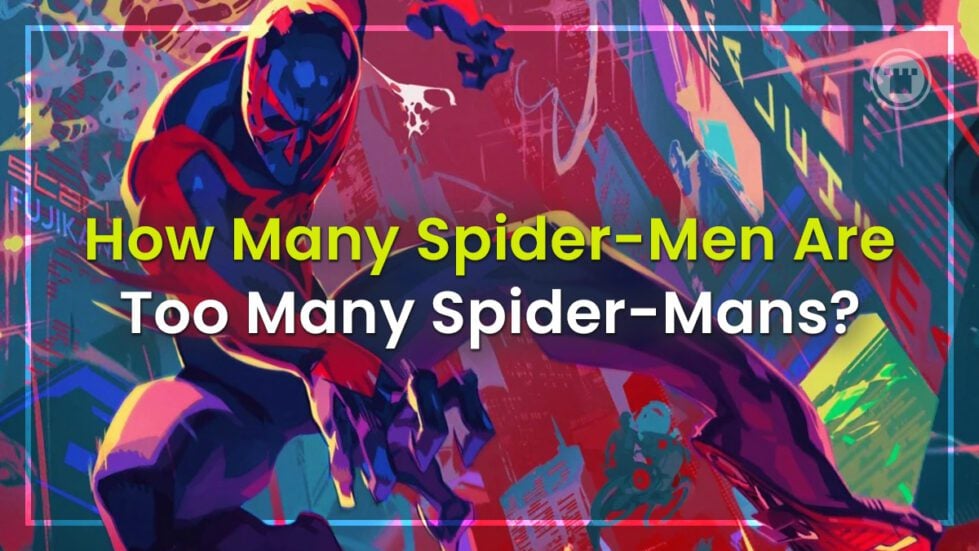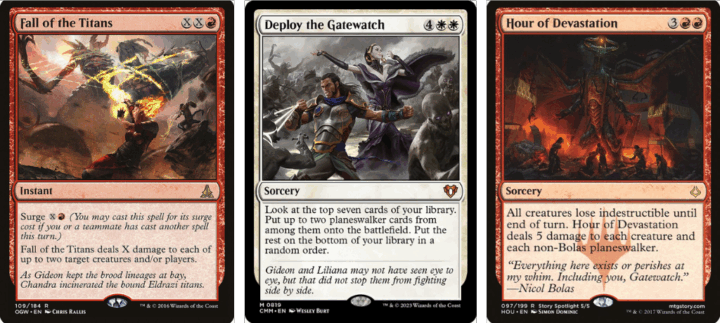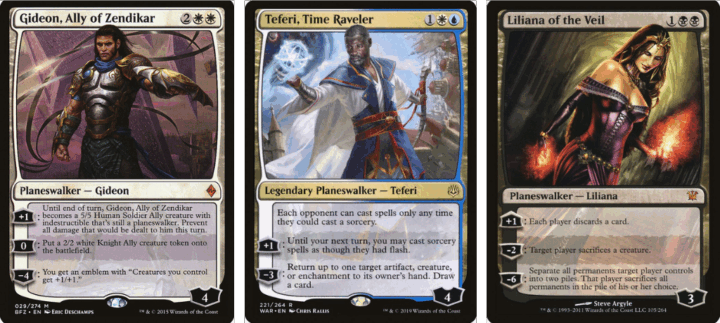How many Spider-Men are too many Spider-Man? It’s a question I find myself asking as we head into Universes Beyond: Marvel’s Spider-Man season.
As of the writing of this article, when you search “Spider-Man” on Scryfall, you get 13 different cards. That’s not including the additional “technically” Spider-Man creatures like Iron Spider, SP//dr, Piloted by Peni, or Spider-Ham, Peter Porker.
By the time the set releases, we could have as many as 50 different versions of Spider-Man to contend with. Thus far, the only other character to even approach that quantity of iterations was The Doctor from Doctor Who. There are fifteen Doctor cards, representing different regenerations of the eponymous Time Lord. Is that any more reasonable? Is there a non-bias answer here? How many versions of a character is too many?
BUT MAGIC HAS A LOT OF ITERATIONS, TOO
If you want to talk about what’s reasonable, we have to get past the elephant in the room. If you look within in-universe Magic sets, you can quickly come back with the fact that Jace has fourteen different Planeswalker cards. Chandra has twenty-one. That’s also a lot of iterations, right?
Well, yes, but you have to look at the context. There are two main factors that set apart the in-Universe proliferation of printings and those in a Universes Beyond set. The first is that the game of Magic as we know it is literally all about these Planeswalkers and their adventures. Magic’s Planeswalkers are their Avengers, their A-team. They are the main characters, and the story revolves around their impact on the multiverse, and how the multiverse impacts them.
It’s very reasonable for these faces of the game to have multiple printings, especially as each is (usually) part of a rich set of hundreds of cards depicting key story moments.
On the flipside, Universes Beyond products are contained entirely within one product release. It comes at you fast. While it’s hard to levy the same criticisms of character-saturation at Final Fantasy, one of the biggest criticisms of the Final Fantasy set was that it was just one set, and tried to cram in way too much. So far, it hasn’t looked like we’d be revisiting any of the Universes Beyond IPs, so it really is all about cramming as much in to one visit as possible.
ACROSS THE SPIDER-VERSE
You could be living under a rock and still be aware of the critical, commercial, and viral success of the more recent Miles Morales Spider-Man movies. The animation styles of Into the Spider-verse, Across the Spider-verse and the upcoming Beyond the Spider-verse walked so K-pop Demon Hunters could run. With the third of those movies on the horizon in 2027, is it any wonder that this is the first of our mainline Marvel sets? I think we can all agree it’s a more sure-fire bet than running back the tired and “over-it” Avengers.
The shortfalls of saturating the consumer in a UB product are exacerbated when choosing to use Spider-Man as the jumping off point — particular in its latest iteration. You have dozens upon dozens of iterations of the main “character”, and I’d argue they’re easier to confuse than the Time Lords of Doctor Who. Each of those was played by a live-action actor, and stayed for varying stints that lasted many years at a time. It’s just easier to tell them apart than some of the latex-clad heroes slinging around New York City. Beyond the mainline cast, the oft memetic and easter-egg laden supporting cast are all behind a mask.
There’s only so much you can take in at once. Fifteen Doctors in 183 Cards is looking to be a way easier ratio to contend with than the (at time of writing) 19 Spider Hero cards in the Spider-Man set.
THE BIG ISSUE IS THAT IT’S ALL AT ONCE
I mentioned two main factors. While quantity of iterations is a little nebulous – especially with our twenty-one Chandras – there is also the issue of timing. The second, and perhaps more relevant factor, is that those many iterations of the main Planeswalkers have been released over literal decades. We get one or two per year. That’s delightfully easy to learn and keep track of, and makes seeing them much more of a main event.
Sure, there are fourteen Jaces and twenty-one Chandras. But seeing a couple a year, and mentally filing away those that aren’t relevant makes it so that remembering the ones that are relevant is that much easier. That goes doubly so for the fact that their card-type is inalienable from the matter at hand. Planeswalkers rotate in and out of Standard, and for the most part, are not widely played in other formats. In Commander, they have to be seriously strong to merit seeing play outside of Superfriends decks, and even then, nobody is playing the more underpowered versions outside of an “Oops, all Chandras” theme deck.
When it comes to the many many Spider-men we’re going to get in Marvel’s Spider-man, they’re all creatures. That already makes them much more likely to show up at Commander tables.
END STEP
It’s probable that if you’re a huge Spider-Man fan that you’ll have no problem keeping track of the many iterations we’re going to see in the next set. My hope is that we see way more villains and side characters to flesh the set out, and that I don’t end up having to keep track of too many more Spider Hero characters than what’s already been previewed.
The thing is, there’s every chance that this is the least engaged with Universes Beyond set so far for the invested Magic player, and so a combined smorgasbord of Spider-Men and lack of general interest has the potential for many players to simply lose track of which Hero is which, and what their mechanics and rules are. It’s not exactly a new issue — keeping track of things across the table has only gotten harder with consecutive “wild” frame treatments and wordy cards – but it certainly doesn’t help.

Kristen is Card Kingdom’s Head Writer and a member of the Commander Format Panel. Formerly a competitive Pokémon TCG grinder, she has been playing Magic since Shadows Over Innistrad, which in her opinion, was a great set to start with. When she’s not taking names with Equipment and Aggro strategies in Commander, she loves to play any form of Limited.






